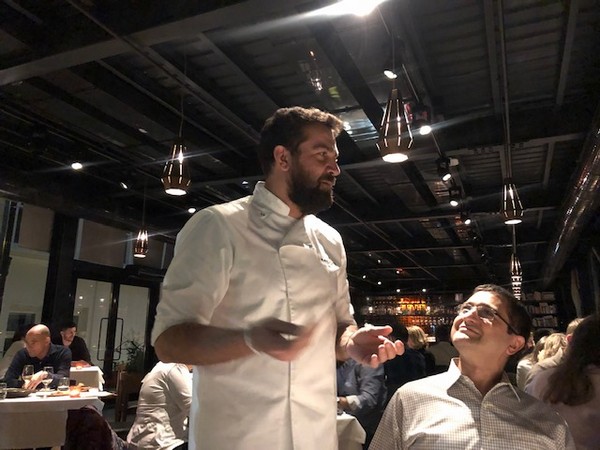
Neolokal is a stunning restaurant. Last night I dined there and had a great experience. It considers itself to be a ‘bridge between the past and the future’, modernising traditions in order to preserve them – ‘presenting dishes from the past in a way that will be accepted in the future.’ This, of course, is hardly a unique approach, but it’s a great path to take, especially when your cooking combines precision and imagination.
Chef Maskut Aşkar (pictured above) has developed a menu where he thinks that people will still find the tastes of their childhood, but with a modern veneer. They also champion local wines, and each table has a guide to Anatolian grapes on it.
The menu is multicourse, sharing style.
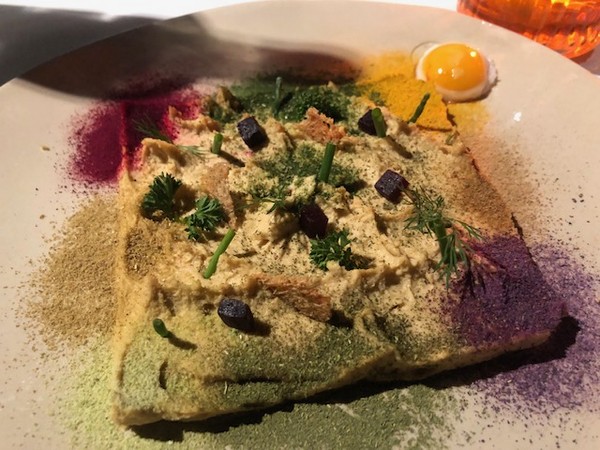
Houmus and Anatolian landscapes. The idea here is to express how rich and colourful the spice road is as it passes through Mesopotamia with the visual appearance of the dish.
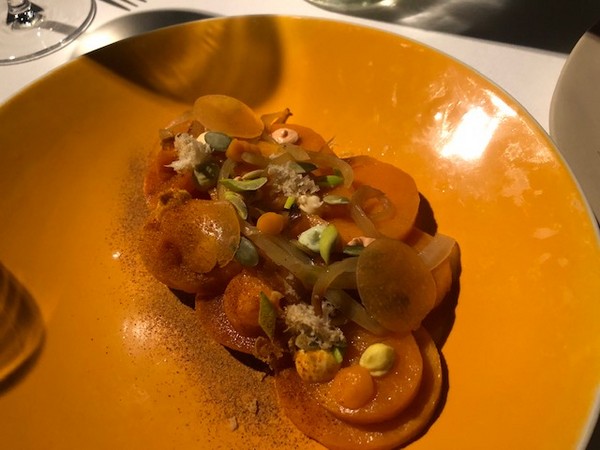
Sikonta. A pumkin dish with its roots in Crete, cooked with onions and garlic, and served with yogurt and walnuts.
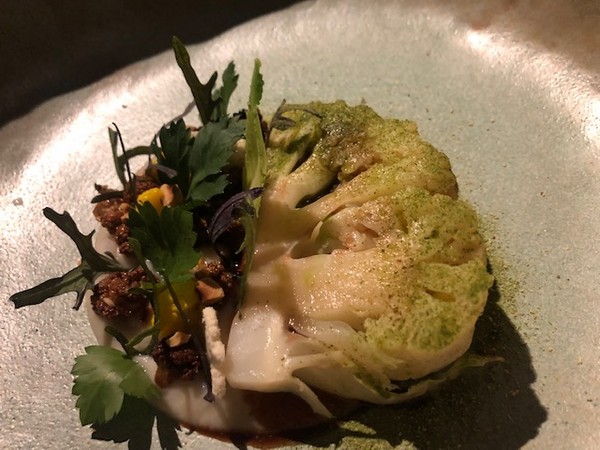
Cauliflower four ways. Braised in olive oil, fried and marinated, pickled, and boiled into a puree. The weak leaves are turned into a powder, and the stems are pickled and served raw. A zero waste dish.

Su boregi. A baked, filled pastry made from a flaky dough (phyllo). Shrimp with this on either side, and the top side is made from the shrimp skins.

Raw bonito, mixed with tarragon, chives and salt, served with lakerda (salt cured bonito). There are some edible flowers too, and walnuts, leeks and onions.

Levrek marin. Marinated seabass with mayonnaise made with mustard and parsley-infused olive oil.
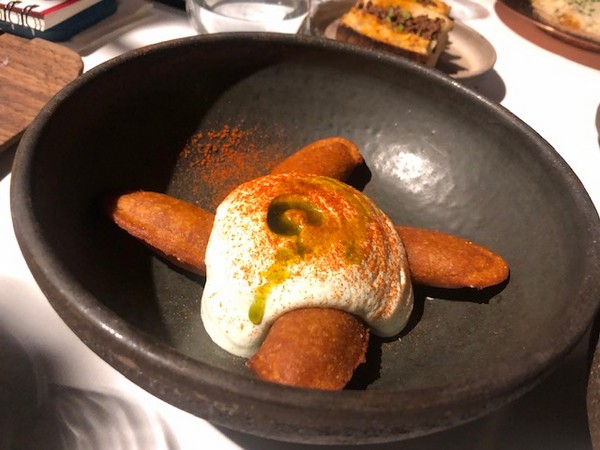
Içli köfte dumplings. Dough of bulgar wheat and raw meat, stuffed with minced meat, walnuts and pine nuts.

Lamb heart kokoreç. Normally this is lamb or goat intestines wrapped around offal. This is a lamb heart take on kokoreç, using the traditional spices.

Eriste with octopus. A home-made pasta with fish and vegetable stock with sundried tomato pesto and octopus.
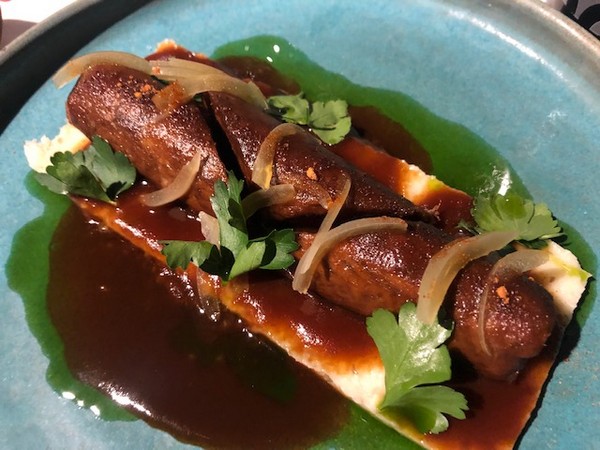
Oxtail and begendi. This is slow cooked for 6 hours on the bone.

Seabass and seafood sausage, accompanied by black lemon (preserved in the caves of Cappadocia).

Lamb and freekah. Lamb saddles marinated with a kebab mix, served with freekah and vermicelli cooked in beef stock.
These were the wines:
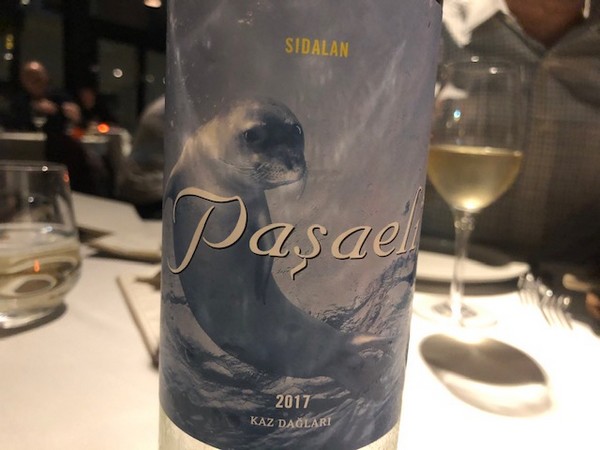
Pasaeli Sidalan 2017 Izmir, Turkey
Sidalan is the grape variety. Lovely precision here with bright citrus fruit. Textural, showing some richness on the midpalate and a bit of table grape. Limey, mineral and pure. 91/100

Suvla Kinali Yapincak 2016 Gallipoli, Turkey
This white grape has red flecks in the skin. This is slightly nutty with some oxidative appley hints. Rounded with some dried herb notes. Pleasant, but a tiny bit flat. 87/100

Selendi Narince 2018 Manissa, Turkey
Narince is a grape from north Anatolia, and is referred to as the Turkish Chardonnay. This is grown at a high altitude (600 m) in a warm climate in the Aegean side of the country. It’s midweight and fresh, with bright citrus fruit, some aniseen, and a hint of mint. Lovely fruit intensity. 89/100

Likya Acikara 2018 Taurus Mountains, Turkey
This is a newly rediscovered old grape variety, and it has a sweet floral aromatic cherry fruit nose. In the mouth it is pure, intense, richly fruited and a bit salty. Powerful and a bit meaty, this has vivid black cherry fruit. 93/100
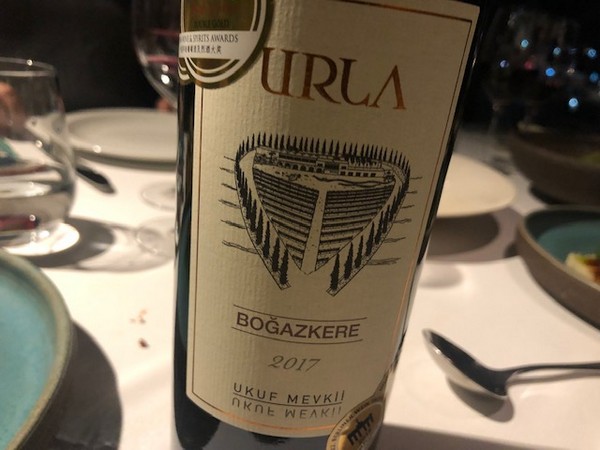
Urla Boğazkere 2017 Aegean, Turkey
Originally from South East Turkey, Boğazkere translates as throat scratcher, but I like it as a grape variety. This is supple, ripe, fresh and berryish with sweet cherries and plums. Rounded and fruit-driven with some gravelly, spicy depth. 91/100
